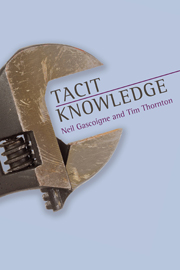Introduction
Summary
It is so difficult to find the beginning. Or better: it is difficult to begin at the beginning. And not to try to go further back.
(Wittgenstein, On Certainty)MAKING IT TACIT
We live in an age of explicit rules and guidelines; of aims and objectives; of benchmarks and performance indicators, standardized tests and league tables. Systematization abounds in the criteria specifying good practice and the delivery of public services; in the charters that outline rights and responsibilities in both civic society and in society's microcosms. A university's once unspecified expectation that its students will attend lectures and prepare work is often now formalized in contracts, and in return students are informed of the explicit “outcomes” of their learning activities. Likewise, in the UK at least, patients' expectations of the quality of care from the National Health Service (NHS) are increasingly constituted by waiting times and the availability of choice. Such reforms aim to replace a tacit or implicit understanding of practices with something explicit and codified. They are expressions of what Max Weber calls “intellectualization”: the sentiment that one can “in principle, master all things by calculation” (1946: 139).
Weber traces the “disenchantment” (ibid.) of the world that this presages to the very origins of systematic epistemological inquiry, and in The Craftsman Richard Sennett similarly identifies as longstanding a suspicion of merely implicitly understood standards:
Plato views it as too often an excuse for mediocrity. His modern heirs in the NHS wanted to root out embedded knowledge, expose it to the cleansing of rational analysis – and have become frustrated that much of the tacit knowledge nurses and doctors have acquired is precisely knowledge they cannot put into words or render as logical propositions.
(Sennett 2008: 50–51)- Type
- Chapter
- Information
- Tacit Knowledge , pp. 1 - 12Publisher: Acumen PublishingPrint publication year: 2013

